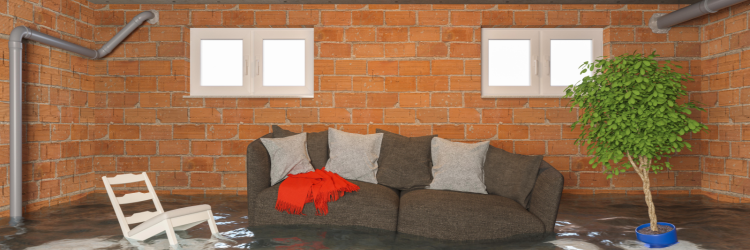The flood insurance crisis in the U.S., which has been described as a "slow-moving hurricane," has made landfall, hitting Louisiana especially hard.
Rising premiums, to reflect soaring claims from natural catastrophes, are now hitting consumers hard enough that Louisiana and nine other states have sued to block increases in national flood insurance rates. Those increases are limited to "only" 18% a year but could eventually total more than 700% for many homeowners and businesses and cause an exodus from southern Louisiana, according to testimony at a hearing last week.
Politicians can be expected to use regulation to protect consumers -- also known as voters -- as long as possible, but, beyond some short-term issues, insurers can't be forced to lose money. Government officials may also decide to subsidize homeowners' insurance policies, but that isn't a long-term strategy, either. Those taxpayers whose flood insurance premiums stay the same or even decline will resist subsidizing those who choose to live with greater risks.
Something has to give. We may finally see consumers start to change their behaviors, either leaving risky areas or fortifying their homes and businesses.
The stats show why push has finally come to shove. Swiss Re reports, "From 2017 onwards, average annual insured losses from natural catastrophes have been over USD 110 billion, more than double the average of USD 52 billion over the previous five-year period.... In the coming decade, hazard intensification will likely play a bigger role as well as higher loss frequency and severity due to climate change." The number of $1 billion natural disasters (adjusted for inflation) has increased steadily each decade, from 3.3 a year in the 1980s, to 5.7 in the 1990s, 6.7 in the 2000s, 13.1 in the 2010s and 20 a year thus far in the 2020s.
As a result, according to the New Orleans Times-Picayune, "The average Louisiana community is projected to see 134% increases for single-family homes, but communities especially prone to flooding will see much steeper hikes. One ZIP code in Plaquemines Parish is projected to see the highest increase in the nation, at 1,098%."
Those kinds of increases will get your attention.
An article in the Atlantic does a nice job of describing the tension that results. The headline is: "What Your Insurer Is Trying to Tell You About Climate Change." The subhead is even more to the point: "Insurers are trying to send a message. The government is trying to suppress it."
The article says the federal government generally discourages using its aid "to fundamentally alter how individuals behave, let alone how local and state governments function. In addition, after the largest disasters, Congress will typically approve multibillion-dollar relief funds, as it recently did after Hurricane Ian in Florida.... Protecting people in harm’s way is, I would argue, an essential part of the government’s job. But public officials are also shirking their responsibility to not leave communities vulnerable again and again."
In the short to medium term, insurers will catch loads of grief for raising premiums and canceling policies, and regulators and legislators may not be a lot of help. In California, for instance, legislators recently tried to tackle two obvious problems that have caused many insurers to stop writing homeowners insurance in the state -- insurers aren't allowed to include the cost of the reinsurance they purchase and can only use historical data for underwriting even as natural catastrophes increase in frequency and intensity -- but couldn't agree on a solution before adjourning until January.
In the long run, I think the real consequences will be borne by consumers and, to a lesser extent, taxpayers (groups that obviously overlap quite a bit). Insurers have to be able to price policies based on the risk involved, so consumers either need to reduce the risk or government needs to subsidize those risks if premiums are to remain affordable.
Consumers, in particular, can do a lot to reduce risk -- but not inexpensively. With new construction, it's fairly easy to avoid high-risk areas or to build on higher ground, to raise the elevation of the living quarters in a house, to build with materials that resist wildfire and high winds, to keep flammable landscaping farther from structures and so on. But the vast majority of homes, apartments and office buildings aren't new. They're decades old, often many decades old. So retrofitting involves a complicated calculation based on the cost and on the benefits from the reduction in risk.
Where insurers can help is by providing information. Insurers know a lot about risk, but, at the moment, they give policyholders pretty blunt feedback. We offer to renew, or we won't renew. We will renew, but with a premium increase of XX%.
To the extent possible, insurers should tell policyholders, "We aren't renewing because...." Better yet, "Your premium is increasing XX% because... but you can reduce that increase if you do X, Y and Z."
The lead example in the piece in the Atlantic has expertise in environmental issues and took an extensive series of measures that meant her house near Yosemite National Park passed "defensive space" inspections recommended by the state fire department -- but Allstate still canceled her policy and didn't tell her why.
Imagine if insurers could coach homeowners, and their communities, about specific things they could to reduce their risk and, in the process, lower premiums.
That wouldn't be a panacea. There will still be loads of short-term issues as consumers and their protectors in government try to minimize increases in premiums and as insurers pull out of markets or decline to renew policies, based on prudent business discipline. Some of the recommendations would cost more than consumers or taxpayers are willing to pay. But at least we could help consumers and governments understand the realities that we're all facing because of climate change and could help define a realistic future.
Cheers,
Paul


